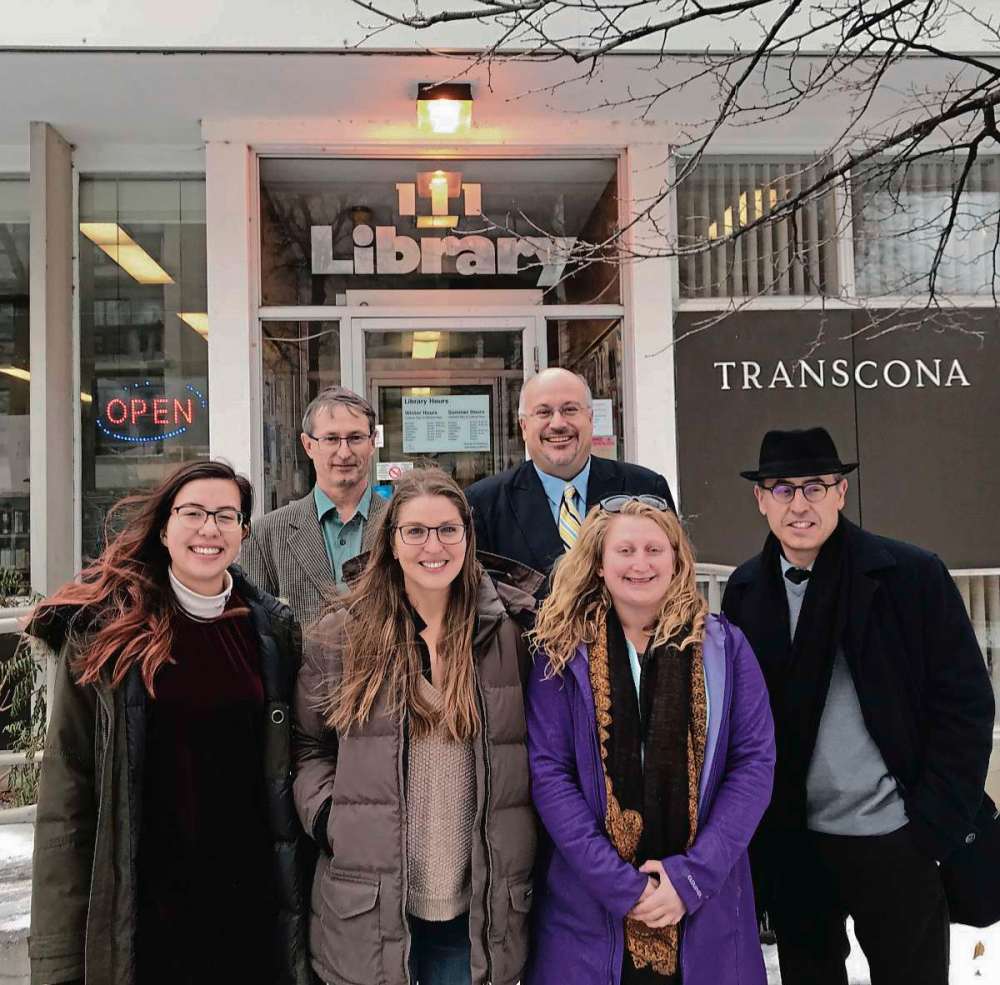Students explore options for Transcona Library
City, UW partner on collaborative project
Advertisement
Hey there, time traveller!
This article was published 07/12/2017 (2915 days ago), so information in it may no longer be current.
Can the existing Transcona Library be converted and used as a community learning commons?
That’s the question that Delilah Bergen, Sara Campbell, and Asia Winter from the University of Winnipeg’s Institute of Urban Studies have spent the fall trying to answer.
The three undergraduate students took part in professor Jino Distasio’s Urban Revitalization course through the department of geography.

“This is awesome, because we have a building in a community with a specific question,” said Distasio, who is the UW’s vice-president of research and innovation and director of Institute of Urban Studies.
“We’ve done a bunch of field work, met with experts, and really learned the process of what happens to a building over the years, while exploring what the community needs,” explained Bergen, a fourth-year student at UW.
The course was the recipient of a $1,000 per capita grant from Transcona’s ward allocation. With the new Transcona Library (1 Transcona Blvd.) expected to be complete in 2018, the City will soon be looking at what can be done with the old library at 111 Victoria Ave. W.
“(This) would be a tremendous project … for our youthful and growing community,” Wyatt said of the project, adding there is a lot of potential for collaboration with community groups moving forward.
While the students set out to explore whether an education hub might be appropriate for the old library, they found that the community may be best served by other uses.
“We found that might only serve a small amount of people in the community,” Bergen said. “Red River College does have a campus on Regent, relatively close, so maybe an education hub isn’t necessary in the heart of Transcona.”
“We’ve heard that people want it to be multipurpose, not just one thing in the building, so everyone in the community can use it,” added Winter, who is in her fifth year at UW.
“A number of people wanted to see a daycare, a number wanted to keep it as a gathering space,” Bergen said.
The students agreed that the space is a good one, and that the building itself is a prime example of modern architecture popular when the library was built in 1961.
“The location is fabulous, in terms of being close to downtown (Transcona) and residential,” Bergen said.
“It’s a modernist building, and that’s the new area we’re trying to protect with heritage status,” said Campbell, a fifth-year student in environmental studies. “It has a very signature façade.”
The main challenge the space has, according to the students, is its lack of parking.
All three students agreed that the practical lessons learned over the course of the past three months were unlike any they’d gained in prior class-based courses.
“It was amazing,” said Winter. “We went to the library three or four times, visited Transcona Museum and the city planning department. Everybody we talked to was very willing to help us with this project. We learned so much from the people there.”
“Theory definitely has a place in the academic world,” Campbell added. “But going out and actually exploring and doing the work really helped us feel like we were doing something for the community, not just learning about a community and forcing idea on to a community.”
Facebook.com/TheHeraldWPG
Twitter: @heraldWPG

Sheldon Birnie
Community Journalist
Sheldon Birnie is a reporter/photographer for the Free Press Community Review. The author of Missing Like Teeth: An Oral History of Winnipeg Underground Rock (1990-2001), his writing has appeared in journals and online platforms across Canada, the U.S. and the U.K. A husband and father of two young children, Sheldon enjoys playing guitar and rec hockey when he can find the time. Email him at sheldon.birnie@freepress.mb.ca Call him at 204-697-7112
Our newsroom depends on a growing audience of readers to power our journalism. If you are not a paid reader, please consider becoming a subscriber.
Our newsroom depends on its audience of readers to power our journalism. Thank you for your support.




